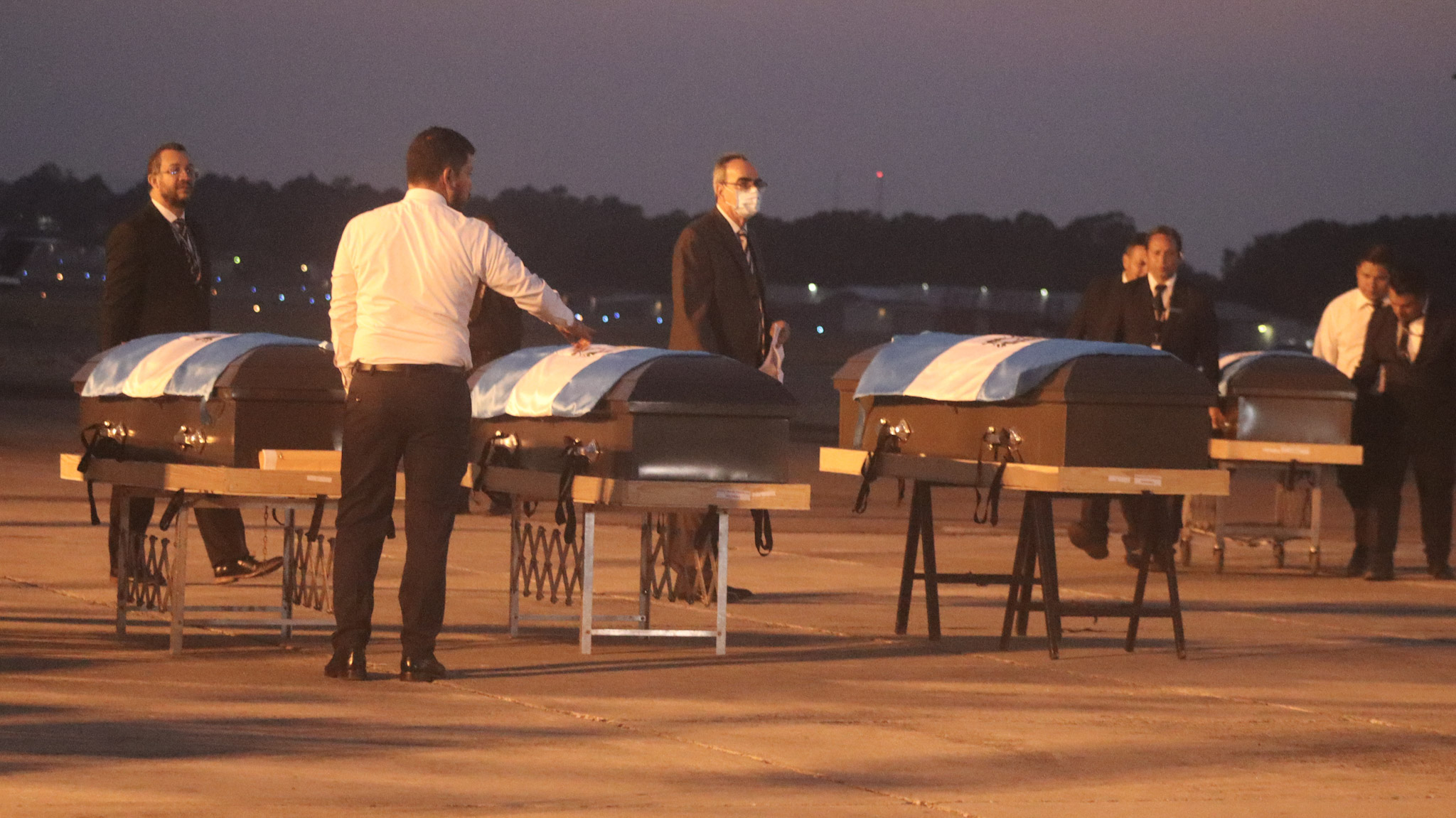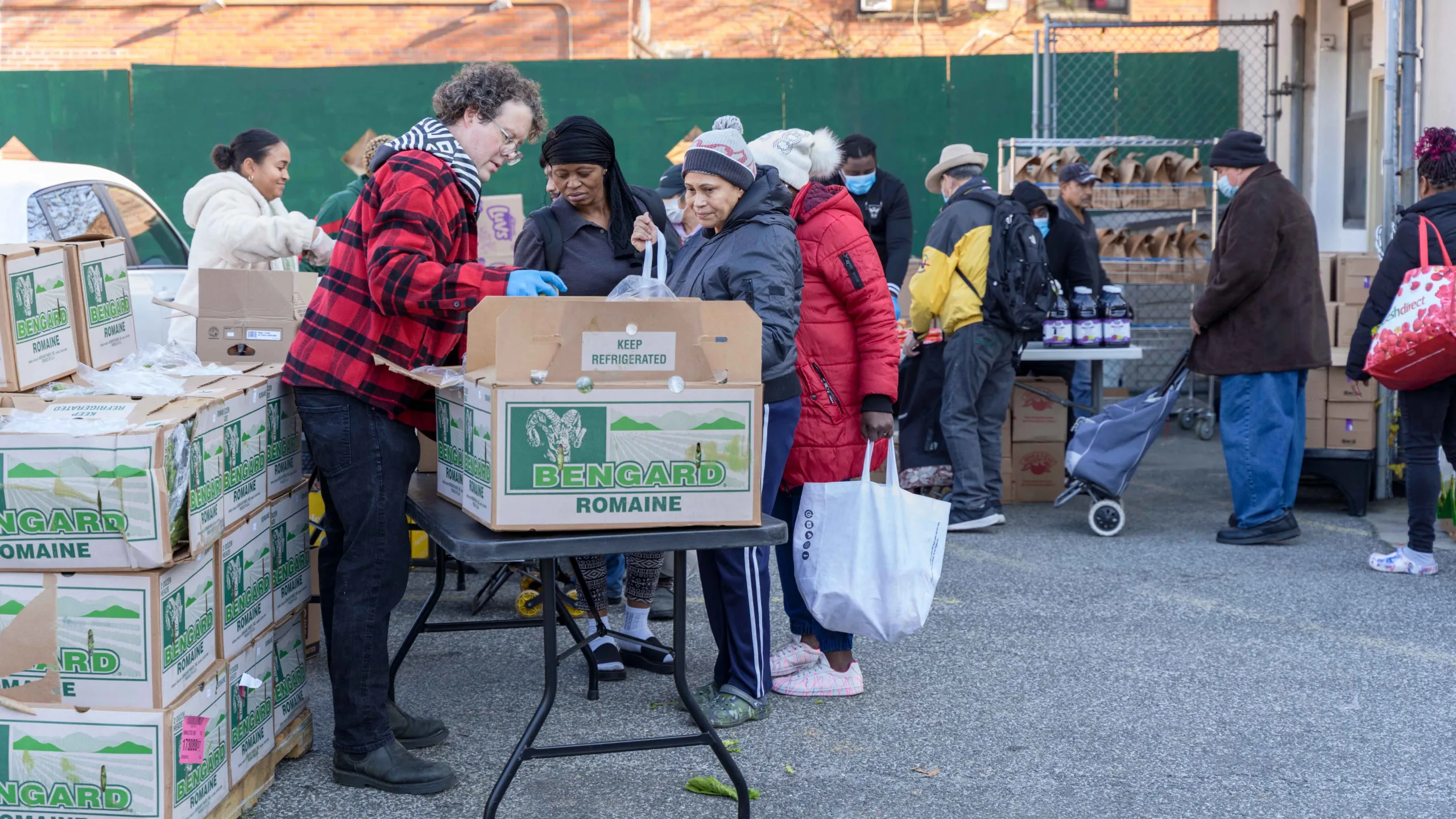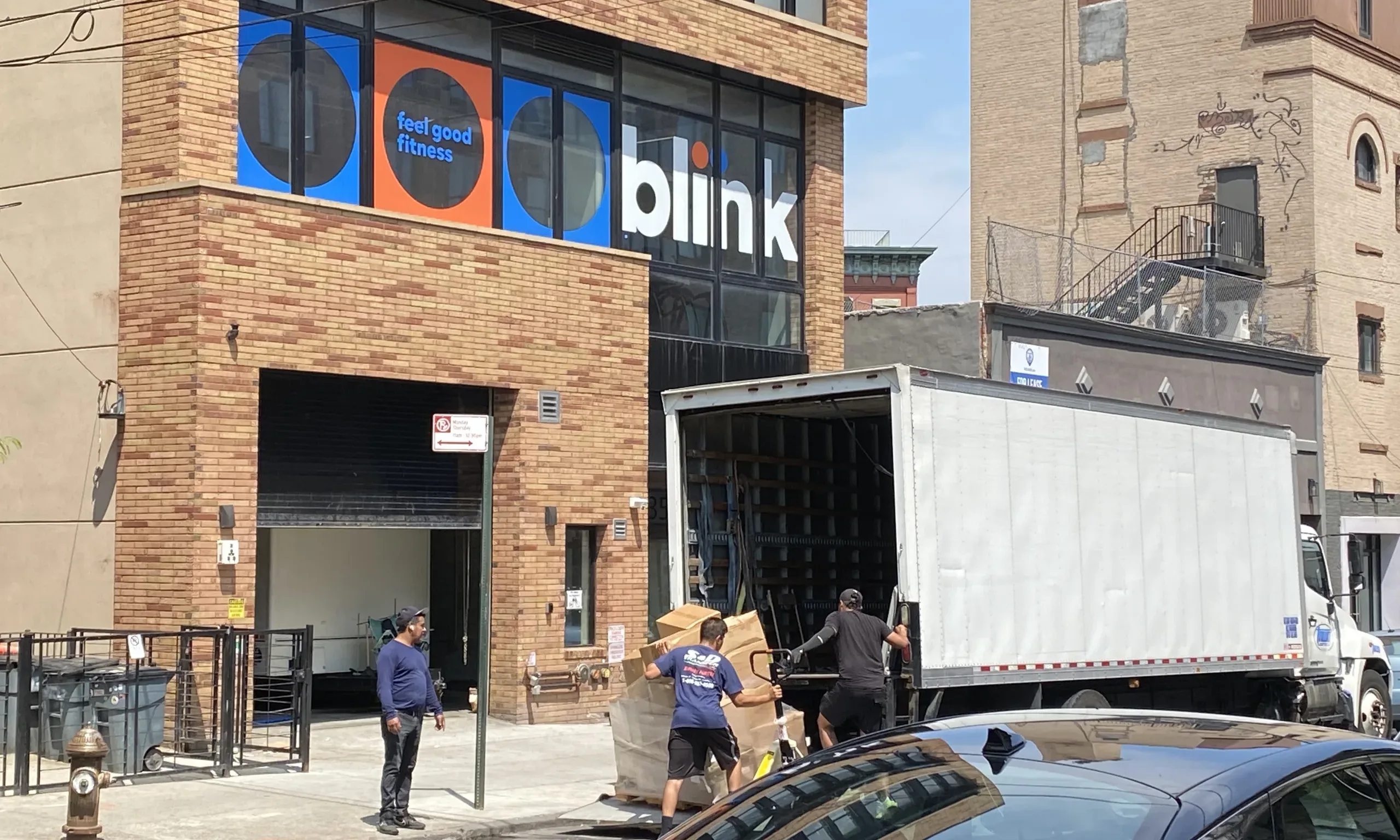Manuel Alexander Chox Tambriz left his small village in the western Guatemala highlands in March, with just a cell phone to guide him and a few belongings in tow. Loved ones lost track of the soft-spoken 21-year-old quickly as he navigated his way up north, reaching the Mexican border city of Ciudad Juárez in about a week.
The last his family heard from him, he was being held in a detention center there. In a brief phone call, he told his mother that she shouldn’t be concerned – he heard he would be released from detention shortly, he said.
From there, his family hoped that he would achieve his dream to reach New York City, more than 3,000 miles away from their hometown.
Maybe the next time Chox Tambriz spoke with his loved ones, he would be reunited there with his cousins and father, whom he had not seen in more than fifteen years. Maybe he would be riding the subway, finding a job and finally making enough money to build a house and support himself, like he’d always wanted.
But his family never got another phone call from him. Instead, they were forced to descend into a period of unexpected mourning, as Chox Tambriz’s name appeared on the list of now 40 victims who had died in a March 27 blaze at the immigration processing center in Ciudad Juárez. About a week and a half after his death, his mother and uncle had to join a video call with the Mexican and Guatemalan authorities, identifying Chox Tambriz’s body through a screen, for further confirmation that their loved one had died in the fire.
Chox Tambriz was being held in a prison with 67 other men. One or more migrants set fire to a mattress in protest at the detention center, after some migrants thought they were going to be deported, authorities said. Video shows that guards left the premises without letting migrants out of the facility, though Mexican President Andrés Manuel López Obrador has said that the guards did not hold the keys. The fire spread throughout the facility and Chox Tambriz, trapped behind bars with nowhere to go, died of smoke inhalation.
“We are anguished, we feel desperate,” Manuel Carrillo Coj, Chox Tambriz’s uncle, said in Spanish in a recent interview with Documented. “He wanted to make a life for himself.”
Chox Tambriz, who was from an indigenous Maya community, grew up in the small village of Patzité, in the Nahualá municipality located in the Sololá department of Guatemala. His uncle, Carrillo Coj, 54, has been acting as an interpreter for his sister and Chox Tambriz’s mother, Catarina Tambriz, who only speaks the language Kʼicheʼ. Chox Tambriz aimed to make it to New York, where he believed he could make a living, and eventually even build his own home, his uncle recounted.
Immigrant advocates in the U.S. and Latin America have condemned the mistreatment of migrants in detention centers and punitive immigration policies which they say led up to the fire. Before the blaze, migrants were rounded up on the streets of Juárez, media reported, and booked into the detention center. Harsh immigration enforcement policies in both Mexico and the United States, including turning asylum seekers away at the southern border, continuing the implementation of Title 42 pandemic measures, and using excessive force to jail migrants, contributed to the tragedy in Juárez, according to various immigrant advocates and human rights groups.
“These governments are the ones who are culpable – because between them, they design the system that leads people to these tragedies,” said Ana Gómez, a coordinator with Promotores de la Liberación Migrante (PLM), a community organizing initiative supporting Maya migrants. The group has been aiding families affected by the fire with direct interpretation services.
Chox Tambriz was one of nineteen Guatemalans who died in the fire, many who were from indigenous communities across the country. Most victims were from Guatemala, and the others were from Venezuela, Honduras, El Salvador, Ecuador and Colombia. Last week, the bodies of the Guatemalan victims, including that of Chox Tambriz, were repatriated back to their homelands.
Mexican authorities announced last week that the country’s top immigration official, Francisco Garduño–who heads Mexico’s National Immigration Institute – will face criminal charges in the fire.
Five low-level officials, guards, and a Venezuelan migrant are facing homicide charges over the fire. There were also more than two dozen people injured in the blaze.
“There are various people who are implicated,” President López Obrador said at a press conference last week. “Since the beginning, we’ve maintained that there will not be impunity for anyone.”
Migration from Nahualá
Around March 19, Chox Tambriz began his journey north, alone, with a cell phone as his main guide. But his family barely heard from him on the way, Carrillo Coj said. “We never knew where he was,” his uncle said.
Also Read: New Yorkers Seek Closure After Fatal Border Crossings
On Sunday, March 26, in the afternoon — the day before the fire — Chox Tambriz’s mother received a quick call from her son, in which they only exchanged a few words. He had been detained the previous day and was being held in the detention center in Juárez, Chox Tambriz told his mother, but he expected to be released soon.
“Mamá, don’t worry,” Chox Tambriz told his mother, “Pray for me.”
It would be the last time she ever spoke to her son.
For years, people have been leaving Nahualá to migrate to the United States in large numbers, family members and friends who live in the area told Documented. About 90 percent of the roughly 75,000 residents of Nahualá live in rural areas, and almost all residents live in poverty or extreme poverty, according to Guatemalan government figures.
Young people especially have been migrating north from Guatemala, due to displacement from their lands, a lack of educational opportunities, inadequate health services, and poor chances for professional and economic advancement, said Julisa García, an advocate with PLM.
People living in indigenous communities in Guatemala either have to move to urban areas within the country, or migrate to the United States, García said. “Those are the only two forms of survival that exist here in Guatemala,” García said.
About 60-70 percent of people from the Nahualá area migrate to the United States, said Erik Tambriz, a second cousin of Chox Tambriz who still lives in the area.
“Here, the situation is lamentable,” Erik Tambriz said. “There are people who have the need to accomplish something – just like him [Chox Tambriz] – that’s why they travel over there.”
Erik, 26, remembers when he was a teenager, many in the town didn’t have many material possessions, but he happily spent most days after school behind Chox Tambriz’s grandparents house playing marbles, hiding from each other in the bushes across the town, and flying down dirt hills on plastic sleds. Erik remembers Chox Tambriz as a sensitive child who always wanted to be included, and loved spending time with the children of the village.
“I see it all as very important, and I see it as very beautiful – because I could share it with him,” Erik said about his time growing up with Chox Tambriz, who he lost touch with after his younger years. “Maybe I couldn’t buy him things, but I’m sure that I was able to put a smile on his face when he was with us.”
Now, the community has come together to support Chox Tambriz’s mother and the rest of the family, Erik said, and to try and alleviate their costs. Members donated money and cooking supplies to the family. “His departure pains me so much,” Erik said. “He had so many wishes, but life couldn’t give him all of that.”
Erik tried to make it to the United States once, he said, but had to turn back home. But Chox Tambriz’s childhood friend, Eli Tambriz (no relation), made the journey to the United States in 2021. The economic situation in Nahualá forced him to migrate, he said.
“In order to move ahead in life, you have to travel here, to the U.S.,” Eli said.
Eli, 21, attended school with Chox Tambriz from elementary school through high school, and they became close friends. He remembers days spent doing schoolwork side by side and spending recess talking about what they wanted to achieve in life. They wanted to travel to other countries, and they knew learning English would be important for that, Eli said. Chox Tambriz liked playing soccer, Eli said, and at school, he excelled at English and Math. His friend was a social person who cracked jokes and made their classmates laugh often. The last time they saw each other was at their high school graduation, Eli said, around 2019. It was a special occasion, and the men wore ties to cheerfully collect their diplomas.
“We were all so happy,” Eli said about that day.
Eli, like most of their classmates, learned that Chox Tambriz died through word of mouth and posts on Facebook and WhatsApp. Those who went to school with Chox Tambriz posted remembrances, and offered prayers for their classmate’s family.
“A part of me didn’t believe it,” Eli said. “It was really hard.”
He added: “What remains are the memories always – they are beautiful. But they also hurt because that person has left this world.”
Carrillo Coj, Manuel’s uncle, remembers his nephew as a calm young man, who often had a smile on his face and stayed out of trouble. But Chox Tambriz ached for a life that offered him more than a never-ending battle to find work. In the area, people who may even have multiple degrees find that work opportunities are scarce. Teachers, professors and accountants in Guatemala have been unable to find work in their professions for many years, he said.
“There’s a lot of poverty, complete unemployment,” Carrillo Coj said about his surrounding community.
He had encouraged his nephew to continue his studies in Guatemala after he received his high school degree. But Chox Tambriz seemed disillusioned by the state of work opportunities in his country, his uncle said, and instead made up his mind to go to the U.S.
“I told him to keep studying–but he said no, because there was no employment, no work, and that’s why he took the decision to go over there,” Carrillo Coj said of his nephew. “He said: ‘I have to risk it and go alone, I know I can do it under the direction of God.’”
Indigenous communities across Guatemala in mourning
The death of nineteen Guatemalans has spread grief across indigenous communities in Guatemala, and among their relatives throughout the United States. “It’s very painful, everyone is in shock,” said Alba González, an interpreter at Comunidades Indígenas en Liderazgo (CIELO), an indigenous-led organization that provides interpretation services to indigenous migrant communities across the US. González’s own cousin from Guatemala, Roberto González Hernández, from San Francisco el Alto, Totonicapán, died in the fire, leaving behind children and a partner.
PLM has been working with about ten families whose loved ones died or were injured in the fire, visiting their homes in different areas of the country to provide interpretation services. All the families speak mostly indigenous languages, including Kʼicheʼ, said García, who has been spending time with the families directly. When authorities release crucial official messages about the fire, the information can remain unclear to families, since it is disseminated in Spanish, García said.
“It’s a really cruel, hurtful situation for the families and the rest of the society,” García said. “They don’t have concrete information.”
At the International Mayan League, a Washington D.C.-based organization supporting Maya communities internationally, the group is raising funds for family members affected by the fires in conjunction with PLM, as most families have large debts to pay off. Advocates across these groups fear that similar incidents will only continue to take the lives of migrants.
TestPost3
“This is not the only tragedy of this kind that has occurred – and it will not be the last,” said Manuela Vázquez, the development associate at the International Mayan League.
Chox Tambriz’s funeral took place on Thursday, more than two weeks after the Juárez fire. Video from a local TV news station shows dozens of community members, some with their arms linked, following Chox Tambriz’s casket, draped in a Guatemalan flag, to a Nahualá cemetery. Family members embraced the casket, clutching white flowers as they prayed over Chox Tambriz’s body. Some community members dug into the ground with shovels as a band played in the background, covering the casket after it was lowered into the earth during what his uncle called a final goodbye.
Chox Tambriz was surrounded by loved ones, who never expected to see him come back so soon after his departure — much less inside a casket. For the family, a battle continues as they demand answers for Chox Tambriz’s death.
“We are in mourning,” Carrillo Coj said on the morning he went to collect his nephew’s body from Guatemala City. “Justice is what we want.”












